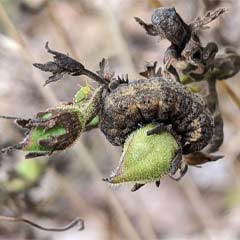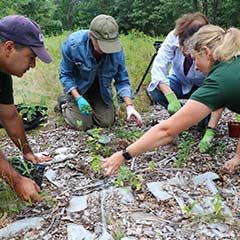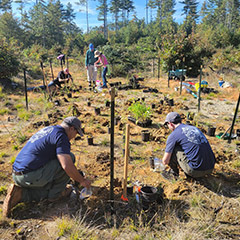Our largest actively managed site is a nearly five-acre wildflower meadow in Concord, MA. Known as Peter Spring Field, the meadow is a robust thicket of wildflowers and a bulwark of the local ecosystem, supporting nesting habitat for Blanding’s turtles, refugia for native pollinators and other animals, and popular foraging space for songbirds. In 2017, supported by a grant from the Concord Garden Club and with the assistance of Hutchins Farm, we initiated the project by removing ecologically useless cover crops and seeding the area with a custom wildflower and grass mix. In 2020, we planted additional patches of rarer native species within the meadow.
We’ve conducted annual surveys since 2020, and the field is flourishing! Among the more widespread flower species are oxeye sunflower, lance-leaved coreopsis, wild bergamot, showy tick trefoil, tall evening primrose, common milkweed, partridge pea, black-eyed susan, daisy fleabane, and rattlebox. We recorded a substantial population of a small moth species, the ornate bella moth (Utetheisa ornatrix), whose larvae depend on the relatively rare legume, rattlebox. This moth had been regarded previously as extirpated from Massachusetts. We also observed the first blooming of the rare native butterfly milkweed (Asclepias tuberosa). Overall, we’ve recorded more than 100 unique plant species in the field, some of which are rare natives that were established without direct intervention (i.e., through natural dispersal!) In warm weather, the field is abuzz with bees, birds, dragonflies and beetles– a testament to its popularity with local pollinators.





